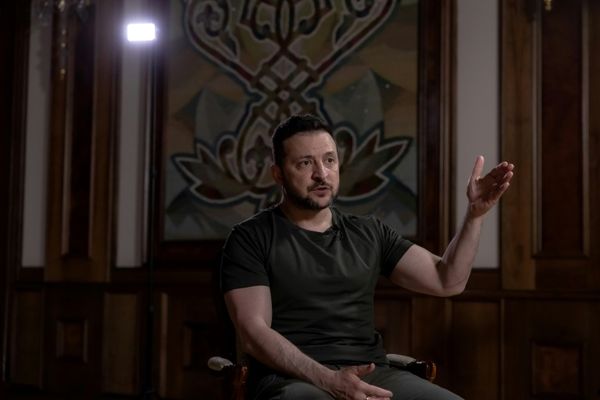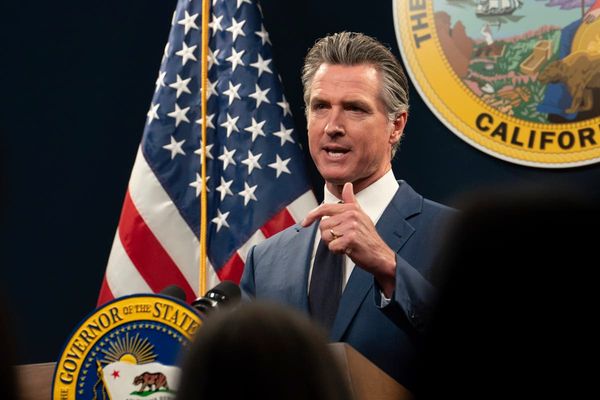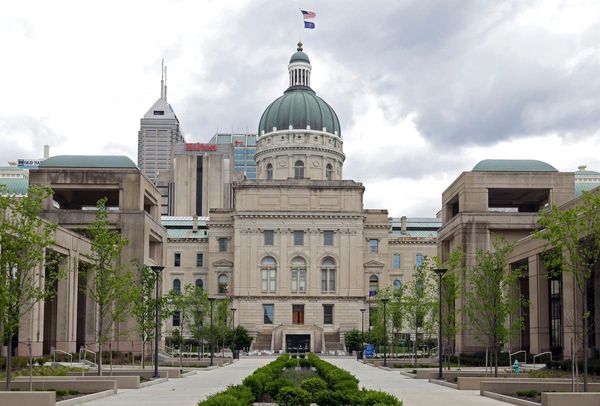
Tesla hasn't broken out in sales by region or country, but by some estimates, it has sold nearly 2 million cars in China to date. To Elon Musk, that's a huge missed opportunity only because Full Self-Driving isn't permitted for complete use in that country. And even if it was, the data from those cars cannot be transmitted back to the U.S. to bolster his autonomous driving dreams further.
At least, that was the case Musk made a surprise visit to China this weekend and seemed to come home with a much clearer path to victory for his newfound AI and autonomy goals.
That story kicks off this Monday morning edition of Critical Materials, our morning roundup of electric vehicle and mobility tech news (which will soon be available in email newsletter form for your convenience too!) Also on tap today: more from the Beijing Auto Show, and Ford's semi-autonomous driver assistance system faces its own troubles. Let's dig in.
30%: Tesla's FSD Dreams Depend On China And They Just Moved Closer To Reality

What a whirlwind week it's been on the Tesla beat. And for that company, that's really saying something.
First, on Tuesday's Q1 earnings call, Musk made more clear than ever that the company's future hinges on AI, full autonomy and robotaxis, especially as he himself seems bored with actually making cars. And by the end of the week, he was pleading his case in a red-carpet visit with Chinese officials to let that country in on the action.
Here's the deal: autonomous or semi-autonomous cars are heavily restricted in China, largely limited to designated suburban areas. Tesla's FSD is also quite limited there. Furthermore, the data from those cars—data Musk believes can be used to train AI for eventual full autonomy—isn't permitted to be transferred from China back to the U.S.
When it comes to this stuff, they trust us about as much as we do them on some key issues: data privacy, national security, sensitive images captured by cameras, you get the idea.
So, in China, Musk appealed to government officials to clear up some of this. And it looks like it worked, according to Bloomberg. Now, this will require a tie-up with Chinese tech giant Baidu, but hey, nothing comes for free:
The US carmaker was granted the approval under certain conditions, according to a person with knowledge of the matter, who asked not to be identified because details of all the criteria aren’t clear. Tesla did manage to clear two of the most important hurdles: reaching a mapping and navigation deal with Chinese tech giant Baidu Inc., and meeting requirements for how it handles data-security and privacy issues.
While Tesla initially enjoyed a red-carpet welcome in China, its fortunes have faded recently as it faces tougher competition from domestic EV makers led by BYD Co. Tesla’s share of China’s auto market shrank to around 6.7% in the fourth quarter of 2023, from 10.5% in the first quarter of last year, according to Bloomberg calculations based on China’s Passenger Car Association data.
Musk’s surprise China visit is “a watershed moment,” Wedbush Securities senior analyst Dan Ives said in an interview with Bloomberg Television. “This could open up FSD in China, which I view as unlocking what really could be the golden opportunity for them."
[...] Teaming with Baidu — one of about only 20 qualified suppliers with the country’s top-level mapping credentials that can be applied to driver-assistance functions — will allow Tesla to tap the Chinese company’s lane-level navigation and mapping services. Tesla has been using Baidu for in-car mapping and navigation since 2020.
In other words, Tesla FSD should be coming soon to China, and Musk seems clear to work with Baidu to send that data back home. A win, no matter what you think of the guy.
None of this, of course, changes the problems that Autopilot and FSD face back home. And I have to wonder how the Chinese government will deal with their occasional penchant for mayhem. But for now, Musk is certainly getting what he wanted.
60%: China's 'Overcapacity' Of New Cars On Display At Beijing Auto Show

One notable place where Tesla could not be found in China, however, was the Beijing Auto Show, which kicked off last week. Our man, Kevin Williams, was on the ground and will be back soon with stories and videos from the show. Interestingly, he reports that no Tesla stand existed at the show this year, unlike the small display it had at IAA Munich last year.
Perhaps it's for the best. The show seemed like a ton of noise, with scores of new Chinese brands and just about every other automaker on earth throwing down and competing for attention. There are only so many buyers in any market. And that oversaturation is what Reuters is covering today:
The last thing China needs is more electric cars crowding the market, driving down prices at the expense of profit. But while there is a peril in China's overcapacity, there is also a power in the hyper-competition it has unleashed.
Exporting that overcapacity, however, has brought EV makers to authorities' attention. XPeng said a European probe into Chinese-made EVs could steer it to invest in plants or suppliers abroad, as the spectre of higher tariffs looms. Polestar Automotive is preparing to shift production of cars it plans to sell into Europe to its U.S. plant from China, its CEO said.
Tie-ups with local firms had long been foreign automakers' route into China but are now becoming a means to survive. Mercedes-Benz said it would continue to invest in tie-ups with Chinese automotive partners including BAIC. Toyota will pair up with tech giant Tencent while Nissan will team up with Baidu, the companies said, cross-border partnerships that highlight the importance of artificial intelligence for carmakers.
But if there was a standout, it was the Xiaomi SU7, which, as we've covered before, is kind of like China's Apple Car: an EV fully connected to your huge personal ecosystem of Xiaomi devices, provided you have those.
Our friends at CarNewsChina report people waited in line for hours to see it:
Even during the press days, people queued for about 40 minutes to access the booth, see the car closer, and sit in it. When the doors opened to the general public on Saturday, the queues got longer, with people waiting about two hours to get inside the booth.
“SU7 is the most popular car in China right now. It has a really good promotion, but I want to see by myself if it is so good,” said one of the visitors to CarNewsChina, who had been waiting for about 1.5 hours to get inside the booth and worked as a UX designer in Beijing.
“I’m interested in the quality of autonomous driving. The design is similar to the Porsche Taycan, but it doesn’t really matter to me; it is their first car. The most important for me is the car’s intelligence,” the young man standing next joins the conversation. “The (Xiaomi) SU7 has a good price. I am considering buying it or the Huawei M7 (refers to Huawei’s brand Aito and its SUV Aito M7),” he replies when asked if the SU7 will be his next car.
More from the show from us soon as well.
90%: Ford Faces Investigation After BlueCruise Crashes

Meanwhile, Ford gets some Tesla-style headaches of its own.
I've only used Ford's BlueCruise 1.0 available on the F-150 Lightning, but I have found it to be quite impressive at navigating mapped highways with your hands off the wheel—all while making sure the driver is actually paying attention. The Mustang Mach-E also has more advanced versions of the system.
Unfortunately, they've now had their share of tragic mishaps too, whether through driver inattention or system bugs or some combination of the two. And now BlueCruise is under investigation by the National Highway Traffic Safety Administration as well, the Detroit Free Press reports:
The U.S. auto regulator said on Monday it has opened a preliminary investigation into Ford Motor's hands-free driving technology BlueCruise after being informed of two incidents involving Mustang Mach-E cars that collided with stationary vehicles.
The National Highway Traffic Safety Administration's Office of Defects Investigation (ODI) opened the evaluation to investigate BlueCruise, which provides partial driving automation with the expectation that the driver actively supervises its performance.
Both the collisions occurred during "nighttime lighting conditions," and each resulted in at least one fatality, according to the NHTSA.
ODI's initial investigation of the incidents confirmed BlueCruise's engagement in each of the vehicles right before the collision.
More on this as we get it, including if Ford addresses it at some point today.
100%: Everything Is Gravy Until The Autonomous Car Crashes Into An Arby's
Pretty much globally, it feels like autonomous driving is accelerating faster than any regulations and rules can keep up with it. I also think it's entirely possible that Tesla's AI push could kick off some new arms race in the autonomy sector, even among consumer cars; Tesla has a weird way of making that happen.
Having said all that, what autonomous car regulations do you want to see passed? If this becomes the norm for many cars—let's say more advanced, hands-off driving that still has manual controls—what should the rules be? And who should be responsible if something goes wrong?
Contact the author: patrick.george@insideevs.com







